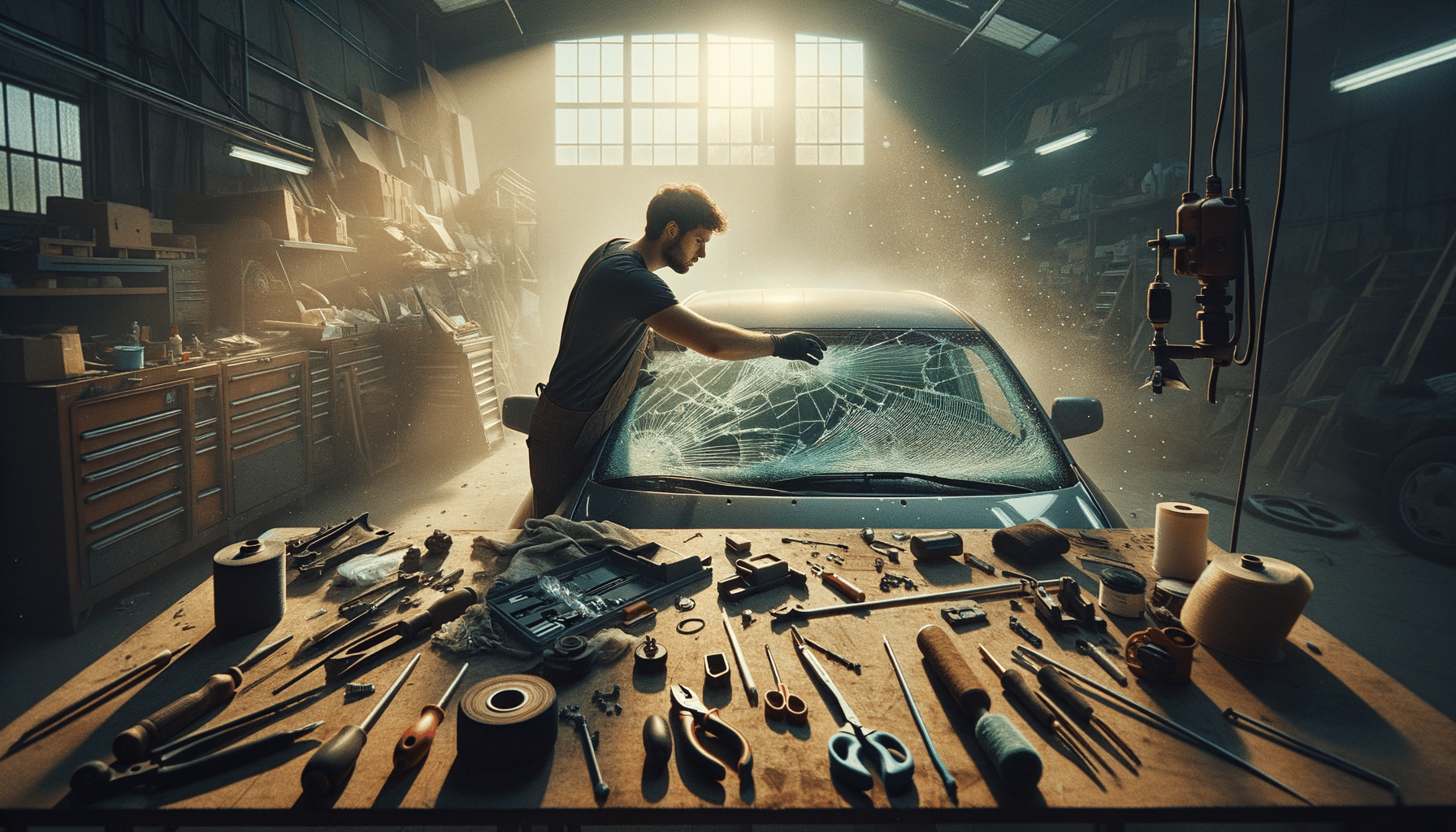
Learn more about windshield replacement
The Importance of Windshield Maintenance
Windshields are more than just a transparent barrier between the driver and the elements; they are integral to the safety and structural integrity of a vehicle. Proper maintenance of windshields ensures that they continue to perform their critical roles effectively. A well-maintained windshield provides clear visibility, which is paramount for safe driving, especially during adverse weather conditions. Furthermore, windshields contribute significantly to the structural strength of a vehicle, accounting for up to 30% of the roof’s support during a rollover accident. This highlights the importance of addressing any damage promptly, as even minor chips or cracks can compromise the windshield’s integrity, leading to potential safety risks.
Ignoring small damages can lead to larger issues over time. For instance, a small chip can quickly spread into a large crack due to temperature changes, vibrations, and other external factors. This progression not only obstructs the driver’s view but also weakens the windshield. Regular inspection and timely repairs are vital in preventing such developments. It’s advisable for vehicle owners to routinely check their windshields for any signs of damage and seek professional assistance when necessary.
Understanding the Windshield Replacement Process
When a windshield sustains damage that cannot be repaired, replacement becomes necessary. The windshield replacement process, while straightforward, demands precision and expertise to ensure safety and functionality. Initially, the damaged windshield is carefully removed, taking care not to damage the vehicle’s paint or bonding surface. This step is crucial, as any damage to the bonding area can lead to leaks or improper sealing of the new windshield.
Once the old windshield is removed, the bonding area is thoroughly cleaned and prepped for the new installation. The new windshield is then positioned and secured using a high-strength adhesive, designed to provide a firm and lasting bond. It is essential that the adhesive cures properly before the vehicle is driven, as this ensures the windshield is securely in place. The entire process is typically completed within a few hours, but the curing time may vary depending on the adhesive used and environmental conditions. Vehicle owners are advised to follow the technician’s instructions regarding the curing time to ensure optimal results.
Choosing the Right Windshield for Replacement
When it comes to replacing a windshield, selecting the right type is crucial for maintaining the vehicle’s safety and aesthetic. Windshields vary based on factors such as size, shape, and technology. Original equipment manufacturer (OEM) windshields are designed to meet the same specifications as the factory-installed glass, ensuring a perfect fit and optimal performance. These windshields are often preferred as they maintain the vehicle’s original integrity and aesthetics.
Alternatively, aftermarket windshields, while generally more affordable, may not always match the quality and fit of OEM counterparts. It is essential for vehicle owners to weigh the pros and cons of each option, considering factors such as budget, vehicle model, and personal preferences. Consulting with a professional can provide valuable insights and help in making an informed decision. Additionally, advanced features such as rain sensors, heating elements, or heads-up displays should be considered, as these may influence the choice of windshield and its compatibility with the vehicle’s existing systems.
Cost Considerations for Windshield Replacement
The cost of windshield replacement can vary significantly based on several factors, including the type of vehicle, the type of windshield, and the service provider. On average, the cost can range from a few hundred to over a thousand dollars. OEM windshields generally come at a higher price point due to their quality and fit, while aftermarket options may offer a more budget-friendly alternative.
Insurance coverage can also play a significant role in the overall cost. Many comprehensive insurance policies cover windshield replacement, subject to deductibles. It is advisable for vehicle owners to review their insurance policies to understand the extent of coverage and any out-of-pocket expenses they may incur. Some insurance companies may even offer zero-deductible options for windshield repair or replacement, which can be beneficial in reducing costs.
Ultimately, the choice of windshield and service provider should not be based solely on cost. Quality and safety should be the primary considerations, ensuring that the replacement windshield meets all necessary standards and provides the required protection and functionality.
Conclusion: Ensuring Safety and Longevity
Windshield replacement is a critical aspect of vehicle maintenance, directly impacting safety and performance. By understanding the importance of regular inspections, the replacement process, and the factors influencing cost and choice, vehicle owners can make informed decisions that ensure their safety and the longevity of their vehicles. Prioritizing quality and professional installation is key to maintaining the structural integrity and functionality of the windshield, ultimately contributing to a safer driving experience.
In summary, regular maintenance and timely replacement of windshields are essential practices for all vehicle owners. These efforts not only enhance safety but also preserve the vehicle’s value and performance. By staying informed and proactive, drivers can ensure that their windshields provide the necessary protection and visibility required for safe and enjoyable journeys.


